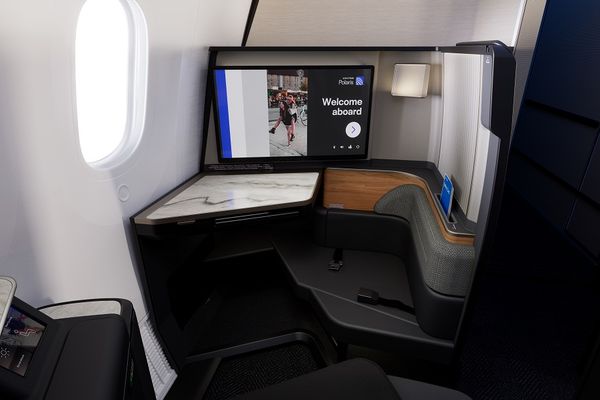The year has barely started, and multiple airlines have already lost or were forced to ground certain aircraft in their fleets. Japan Airlines lost an Airbus A350-900 in a fiery crash, Alaska Airlines is scrambling to salvage its fleet, and the Federal Aviation Administration (FAA) grounded 171 Boeing aircraft for safety reasons.
On January 5, an Alaska Airlines Boeing 737 MAX 9 suffered a mid-air incident that sent shockwaves through the aviation industry. Shortly after takeoff from Portland, Oregon (PDX), on its way to Ontario, California (ONT), a section of the fuselage, including a window, blew out, forcing the plane to make an emergency landing back in its origin city. Thankfully, all 177 passengers and crew onboard were unharmed.

Not The First Time
While the exact cause of the incident remains under investigation by the National Transportation Safety Board (NTSB), this event has revitalized anxieties surrounding the Boeing 737 MAX, a model grounded worldwide in 2019 following two fatal crashes within five months.
The MAX was Boeing's answer to Airbus's fuel-efficient, single-aisle A320neo. However, its development was plagued by controversies around the flight control system, particularly the Maneuvering Characteristics Augmentation System (MCAS), which came under scrutiny after the Lion Air Flight 610 and Ethiopian Airlines Flight 302 crashes were attributed to its malfunction.
MCAS was designed to prevent stalling by automatically pushing the plane's nose down, but in both crashes, it falsely activated based on faulty sensor data, leading to uncontrollable dives.

Following extensive investigations and modifications, the MAX was recertified in late 2020 and gradually returned to service. However, this incident on the Alaska Airlines flight casts a shadow on the aircraft's reputation, raising concerns about potential unresolved issues or manufacturing flaws.
In response to the incident, Alaska Airlines has taken the proactive step of grounding its fleet of 65 Boeing 737 MAX 9 aircraft. This fast action highlights the airline's commitment to passenger safety and demonstrates the seriousness of the situation.
"The safety of our guests and crew is our top priority," said Ben Minicucci, CEO of Alaska Airlines. "We will continue to work closely with the NTSB and Boeing to understand the cause of this incident and ensure the continued safety of our fleet."

FAA Grounding
The Federal Aviation Administration (FAA) later tweeted a temporary grounding of Boeing 737 MAX 9 aircraft operated by U.S. airlines or within U.S. territory. This decision follows the issuance of an Emergency Airworthiness Directive (EAD), mandating operators to inspect aircraft that do not adhere to the specified inspection cycles before allowing further flights.
The inspections are expected to take four to eight hours per aircraft and address safety concerns after the Alaska Airlines incident. This directive is set to impact around 171 airplanes globally, underscoring the FAA's commitment to ensuring aviation safety and addressing potential flaws in the plane's design.

The Future
While other airlines have yet to follow suit, the incident is bound to have ripple effects across the industry. Regulators worldwide will likely re-examine the MAX's operational conditions. They may demand additional inspections or modifications, and passengers may be more anxious about flying on this particular model of the Boeing 737, potentially impacting airlines' booking numbers.
The investigation into the Alaska Airlines incident is still in its early stages, and it will be some time before there are definitive answers about the cause of the fuselage breach. However, this event serves as a stark reminder that accidents do occur even in the age of advanced technology and strict safety regulations.

This incident is a significant development in the Boeing 737 MAX situation, and its consequences will be felt throughout the aviation industry for some time. The coming days and weeks will be crucial in determining the cause of the mid-air incident and will definitely impact the plane's future and possibly Boeing as a company.
World’s Most On-Time Airlines and Airports of 2025 » This Week in Aviation: The 10 Stories That Mattered Most » Iraqi Basra Airlines Secures Air Operator Certificate »
Comments (0)
Add Your Comment
SHARE
TAGS
NEWS Alaska Airlines Boeing 737 MAX 9 Boeing 737 MAX 9 Incident Investigation Safety Portland PDX ONT OntarioRECENTLY PUBLISHED
 This Week in Aviation: The 10 Stories That Mattered Most
From major airline developments to aircraft updates and industry shifts, this weekly recap highlights the ten most-read aviation stories from the week of December 28.
INFORMATIONAL
READ MORE »
This Week in Aviation: The 10 Stories That Mattered Most
From major airline developments to aircraft updates and industry shifts, this weekly recap highlights the ten most-read aviation stories from the week of December 28.
INFORMATIONAL
READ MORE »
 Nearly 500 Flights Cancelled Following Venezuela Attack, Caribbean Airspace Closure
Hundreds of flights have been cancelled this morning after an overnight U.S. military attack in Venezuela left airspace in much of the Caribbean closed.
NEWS
READ MORE »
Nearly 500 Flights Cancelled Following Venezuela Attack, Caribbean Airspace Closure
Hundreds of flights have been cancelled this morning after an overnight U.S. military attack in Venezuela left airspace in much of the Caribbean closed.
NEWS
READ MORE »
 Why Airline Class Wars Will Intensify in 2026
The "Class War" of 2026 is no longer just about legroom; it is a calculated, multi-billion-dollar strategic pivot by Original Equipment Manufacturers (OEMs) and carriers to capture a "splurge-ready" traveller base that is increasingly opting for "one big trip" over frequent, low-cost hops.
INFORMATIONAL
READ MORE »
Why Airline Class Wars Will Intensify in 2026
The "Class War" of 2026 is no longer just about legroom; it is a calculated, multi-billion-dollar strategic pivot by Original Equipment Manufacturers (OEMs) and carriers to capture a "splurge-ready" traveller base that is increasingly opting for "one big trip" over frequent, low-cost hops.
INFORMATIONAL
READ MORE »



